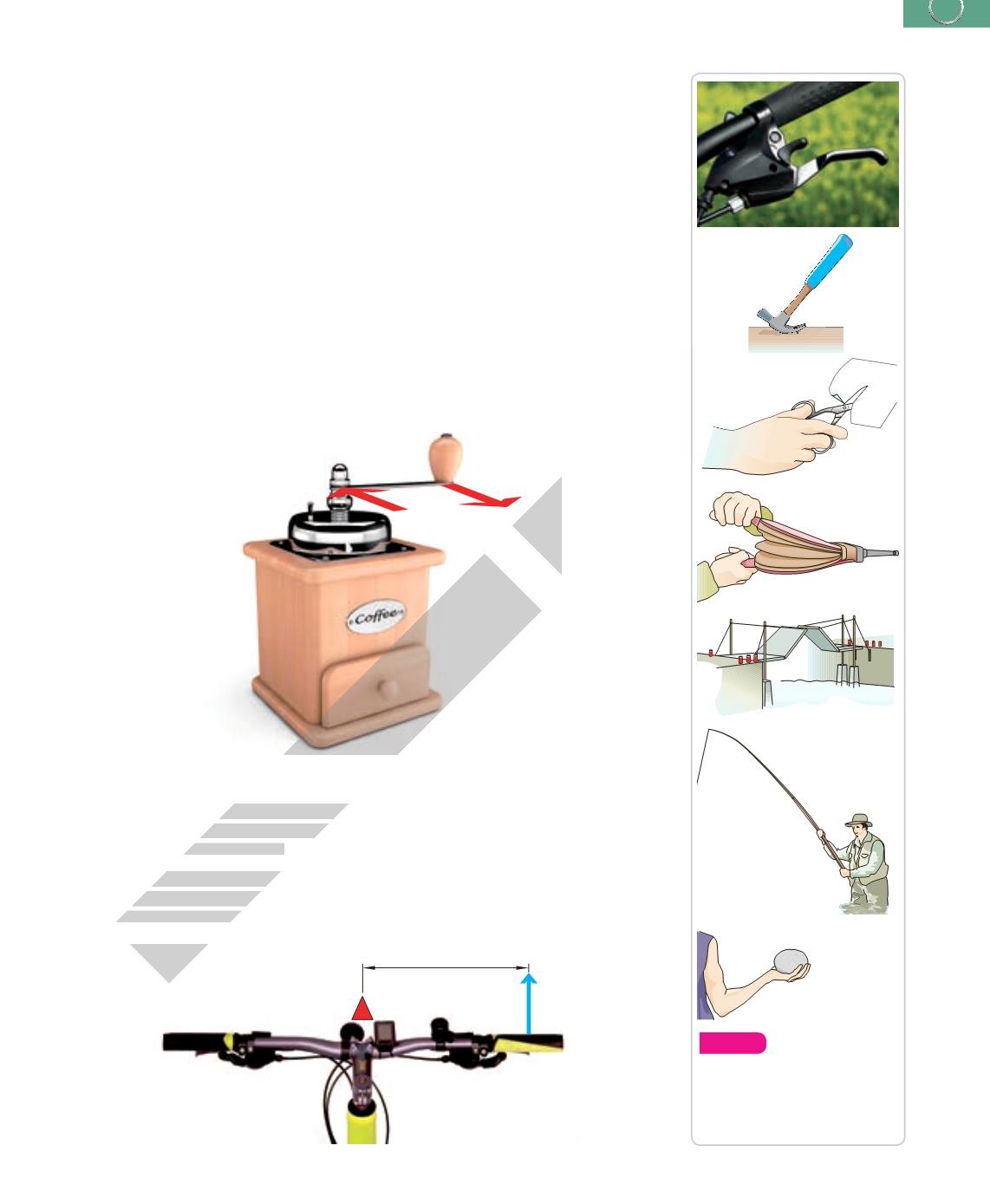
105
5. Mechanisms
www
Apply
8.
Locate the fulcrum, force
and resistance in the levers
above. Identify each type
of lever.
Brake levers
Bicycle brakes decrease speed. We control them with levers on the handlebars.
These levers pull on cables and the cables activate the brakes on the wheels.
A hand crank
A hand crank has two parts. One is connected to a rotating shaft and the other forms
a handle. We can use a hand crank to apply force at a distance from the axis of the
shaft. This makes it easier to turn. A crank is a Class 2 lever, so it obeys the Law of
the Lever:
F · d = R · r
F
is the
force
that we apply;
d
is its distance from the axis of rotation.
R
is the
resistance
in the shaft; and
r
is the radius of the shaft itself.
Applications
:
we use cranks to make rotation easier in various mechanisms, such as
door handles and bicycle pedal systems.
R
F
fulcrum
force
distance
Bicycle handlebars
The handlebars of a bicycle work like a crank. If we place our hands at the ends of
the handlebars, they are easier to turn. If we put our hands near the middle, it’s more
difficult to turn the handlebars.
The steering wheel of a car has a circular shape, but it is similar to the handlebars of
a bicycle. It is easier to turn a larger steering wheel because there is a larger distance
between the outside of the wheel and the axis of rotation in the centre.
ADVANCE EDITION


